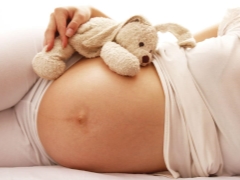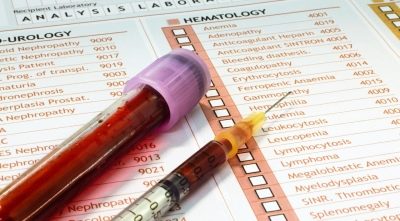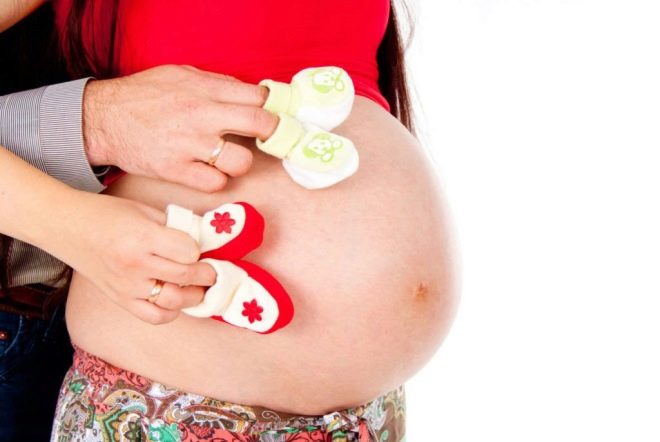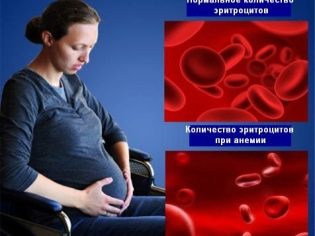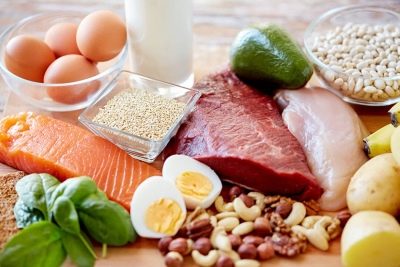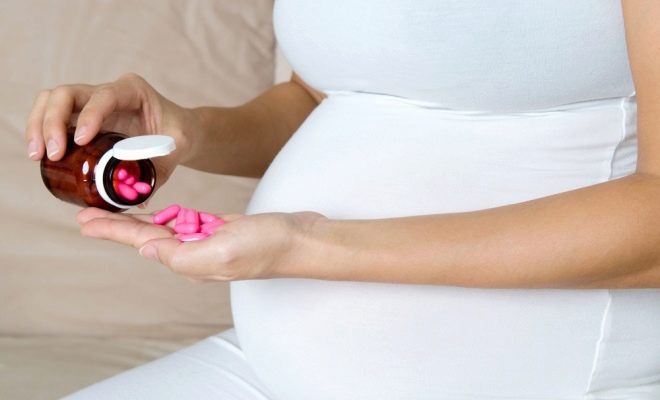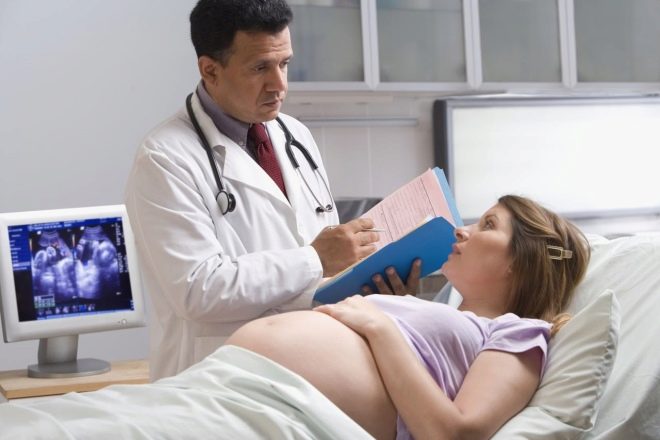What hemoglobin should be during pregnancy in the 2nd trimester?
Normal blood counts in the middle of the child's pregnancy period are very important. Hemoglobin is one of the important clinical indicators, which is estimated in pregnant women in the 2nd trimester.
What is necessary to determine?
Developing in my mother's tummy, the child is provided with all the components necessary for him through the system of placental-uterine blood flow with his mother during this period of his prenatal development. Their special carrier is hemoglobin.
In order for the baby to fully develop, it requires constant maintenance of the normal concentration of the substance in the blood. Any significant changes in its level can lead to quite dangerous pathologies for the fetus. They can also disrupt the baby’s natural organogenesis process.
During pregnancy, the need for this protein substance increases significantly.
The more the baby grows in my mother's tummy, the more nutrients and oxygen are needed. If the future mother carries several children at the same time, this need increases even more.
Norms
At different terms of carrying a baby, the concentration of this protein substance changes. By the middle of pregnancy, hemoglobin rates are no longer the same as at the very beginning of pregnancy.
To determine the concentration in the blood of this protein by using a general analysis. He is appointed to all future moms without exception. To assess the occurring disorders, the doctor assesses not only the level of hemoglobin, but also red blood cells. Often these indicators change at the same time.
The normal level of this protein in the blood during the 2 trimester should be in the range of 108-114 g / liter. Quite often it happens that in pregnant women its values significantly decrease. In such a situation, doctors are forced to state the development of an anemic condition in the future mother.
In daily work, doctors use a special table. It contains the maximum permissible limits of hemoglobin normals in pregnant women in the second trimester of pregnancy. Such a table is presented below:
Baby Week | 16 | 20 | 23 | 24 | 25 |
Minimum permissible limit of normal (/ g / liter) | 106 | 104-105 | 105 | 105 | 106-110 |
During this period, the hemoglobin level should not fall below 100 g / liter. Such a drop in protein in the blood can gradually lead to the development of anemia.
If the hemoglobin is slightly elevated and is 116-120 g / liter, then this is not a reason for panic or feelings.
Often this is an individual feature of a particular woman. In such a situation, it is only necessary to exercise dynamic control over the course of pregnancy.
What do the changes indicate?
Maintaining an optimal level of hemoglobin during pregnancy is a very important goal that must be achieved. The change in concentration can be either up or down.
Deficient state is recorded in pregnant women at this time much more often.
Low hemoglobin
Reducing the concentration of this protein to 90-99 g / liter requires the compilation of individual recommendations.Usually in such a situation, the doctor will recommend the expectant mother to carefully monitor her daily diet.
In this case, a pregnant woman should consume a sufficient amount of products containing iron in its composition. She should eat them daily. Optimally, if during the day the expectant mother will eat At least 1-2 servings of dishes to which iron-containing products are added.
Eating beef, veal, game, offal will help a pregnant woman to normalize the level of hemoglobin in her body. Eat such products should be throughout the time before delivery.
For better absorption of heme iron, doctors recommend supplementing the diet with fruits and vegetables. They contain a lot of ascorbic acid. It helps the gland to be better absorbed and absorbed, which leads to the normalization of hemoglobin levels in the blood.
Quite a lot of ascorbic acid is found in citrus, pomegranates, green apples. It is better to choose the fruits of the season. In them, the content of ascorbic acid will be maximum.
The alternation of different fruits will help the body also obtain other necessary vitamins necessary in this period of pregnancy, both for the future mom and for her baby.
The fact is that to compensate for the concentration of hemoglobin in the blood takes a lot of time. On the background of diet therapy, his blood level will gradually increase.
In order to evaluate how well such a diet helps, the doctor will definitely prescribe additional blood tests to the expectant mother. If after a couple of weeks the concentration of hemoglobin in the blood has become normal, the woman will only continue to follow her dietary recommendations.
If the level of this protein in the blood remains low, it may be necessary to prescribe special iron-containing drugs. Usually they are written out for a long reception. Such use allows the hemoglobin to gradually increase.
It is important to note that this treatment is prescribed only if the cause of the resulting disorders Iron-deficiency anemia.
If an anemic condition appeared in the future mother as a result of some other pathologies or disorders, then a completely different treatment complex would be needed to normalize hemoglobin level.
The most commonly prescribed iron supplements include: "Sorbifer", "Ferrum Lek"," Totem " other. Acceptance of these drugs may be accompanied by the development of side effects.
One of them is the staining of the chair in black. Some women have abdominal discomfort or even pain. Nausea may also occur. The severity of these symptoms is usually insignificant. Most women transfer these funds quite well.
If the future mother has any diseases of the gastrointestinal tract organs, especially those that occur in the erosive form, iron-containing drugs will be given to her in the form of injections. Appoint such funds can and course reception. During their use, the effectiveness of the prescribed therapy is also necessarily monitored.
A decrease in hemoglobin level often occurs in expectant mothers who are carrying several babies at once. Especially unfavorable, if the anemic condition of the woman was present before the onset of pregnancy.
For the development of two or three babies at the same time requires more nutrients. This leads to the fact that the level of hemoglobin begins to decline by the middle of pregnancy. If the reduction is significant, then in such a situation, just following a diet with the inclusion of iron-containing foods will not be enough.
In this case, already from the middle of the pregnancy, the expectant mother who is carrying twins will be prescribed medications. They will help to normalize the level of hemoglobin, which is necessary for both babies.
High hemoglobin level
It is no coincidence that doctors set the upper limit of the permissible concentration of this protein in the blood. Exceeding it can also become a manifestation of pathology. According to statistics, such diseases are much less common than deficient states.
If during the second trimester of pregnancy, the hemoglobin level becomes higher than 135-140 g / l, this may indicate that the expectant mother has diseases of the internal organs.
Thus, diseases of the liver and kidneys can manifest. Pathologies associated with the deficiency of certain B vitamins can also lead to the development of such a condition.
A significant excess of hemoglobin is often accompanied by an increase in the number of red blood cells. These changes contribute to the disruption of the natural process of blood clots.
This leads to the fact that small blood clots can form in the blood vessels that feed the fetus. Such blood clots that block the arteries of the uteroplacental circulatory system, provoke a violation of the flow of all vital substances for the baby.
Ultimately, this contributes to the development of the child dangerous hypoxic state. In the 2nd trimester of pregnancy, this condition may even become a threat to the further course of pregnancy. Correction of the resulting violations, as a rule, in this situation is carried out in a hospital.
All about anemia, as well as the physiological and psychological problems of pregnancy, see the next video.
